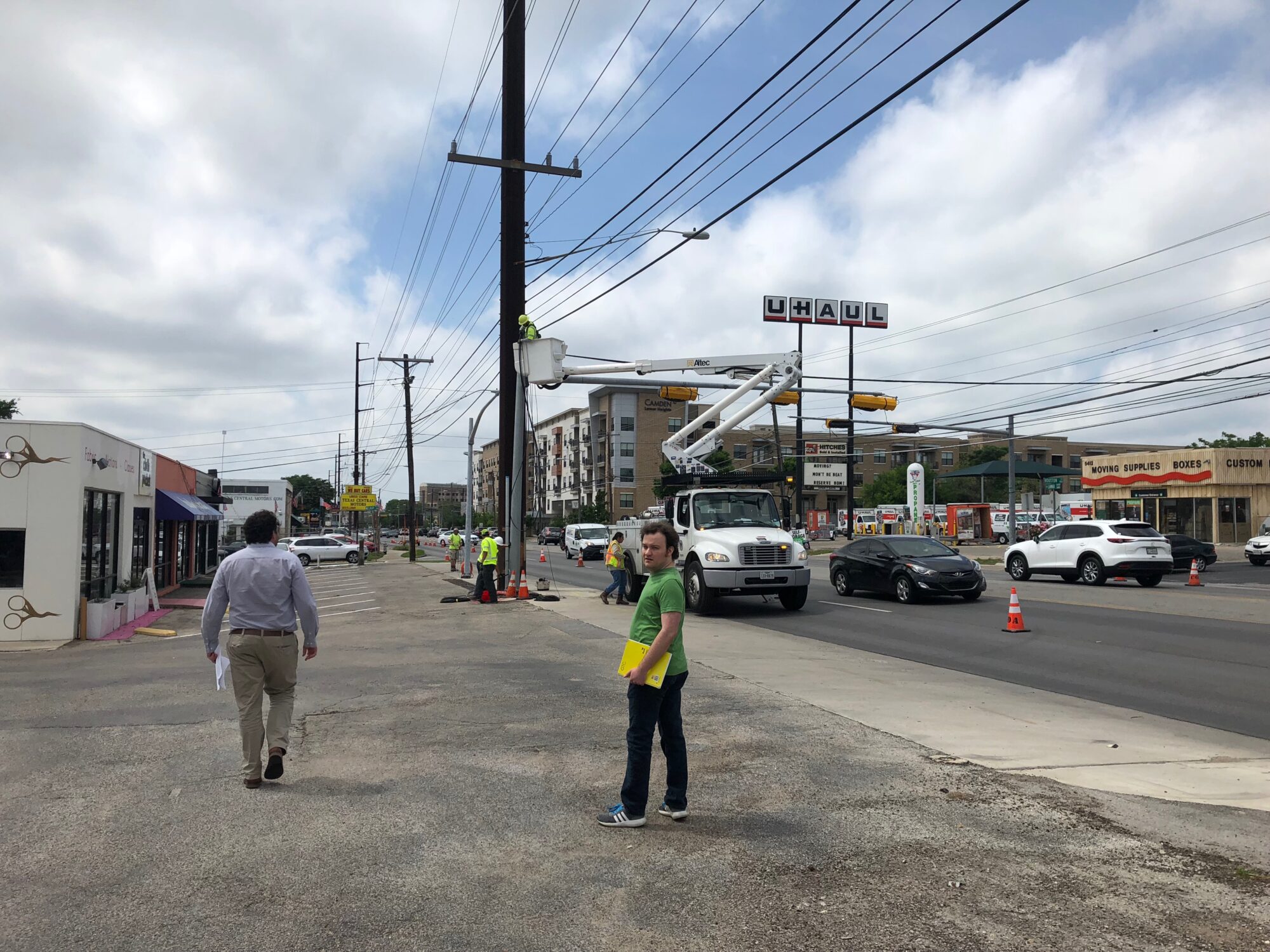I live and work on North Lamar between North Loop and Koenig. It’s the first place I’ve lived in Texas that enables anything close to an urban lifestyle.
Meaning that I live in a nice little apartment and can easily walk to several shops and restaurants. I can bike to HEB in ten minutes, and the MetroRapid buses take me to most of where I need to go throughout the city.
It’s not perfect, but I overwhelmingly prefer this arrangement to anywhere else I’ve lived. And it turns out that if you want to make it better, maybe you can.
Today, there isn’t a crosswalk in the 2000ft between North Loop and Koenig. Between those intersections, there are a few dozen shops and restaurants and six bus stops. There are more of both just outside those boundaries. All this to say, people dash across the street all the time.
This dangerous situation happens across Texas, but transportation officials are starting to try to fix it. TXDOT, the Texas Transportation Institute, Farm&City, and others who are contributing to the Texas Strategic Highway Safety Plan are working right now on a countermeasure specifically looking at “the distance needed between safe pedestrian crossings”. Long term, this SHSP could result in big shifts of focus, funding, and priorities.
This situation is not safe for me and my neighbors today! Furthermore, dashing across the street is one thing for the able-bodied, but what are the nearly 20% of Austinites with disabilities supposed to do? On a similar stretch of Lamar a bit further north, 15 people have died in the last 7 years. One of them, Donald Norton, was crossing Lamar in a motorized wheelchair in a long stretch where the street lacks continuous sidewalks without a safe crossing.
However there are solutions, and fortunately, the city of Austin provides the opportunity to pursue safer streets. On April 4, I called 311 to request a Pedestrian Hybrid Beacon at Houston Street, about halfway between the two intersections.
To be honest, it seems to me that there should be three crosswalks in between North Loop and Koenig, but even adding one PHB anywhere in between would be a huge boon to safety – significantly fewer people will risk running across the street if there’s a safer way nearby. NACTO estimates that people generally don’t want to walk more than three minutes to cross.
It is only nine days after I called 311, but I got my wish! I suspect it was other people’s wishes too, because it took only a week for ATD to get back to me: “We are currently constructing a traffic signal at N. Lamar and Houston… We are working toward having this signal in place by the end of April/beginning of May.”
Sure enough, I stepped out for lunch yesterday to find that the city was installing not just a PHB, but a new traffic signal.
To what extent am I responsible? I’m not sure. What matters to me is that there is this wonderful avenue for anyone in Austin to identify public problems and advocate for solutions, and that the Austin Transportation Department has made significant strides in developing safety intervention programs like this, with the ability to actually respond.
These opportunities to build safer streets are available throughout Texas, and not just for crosswalks. You can call 311 and request services from Public Works, Transportation Departments, etc. The largest Texas cities collectively spend hundreds of millions of dollars annually on transportation, some of it may as well be steered by residential input. All cities and counties should develop the capabilities to respond promptly, after verifying the need and design based on actual data and current best practices.

